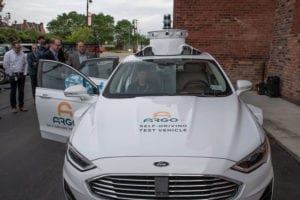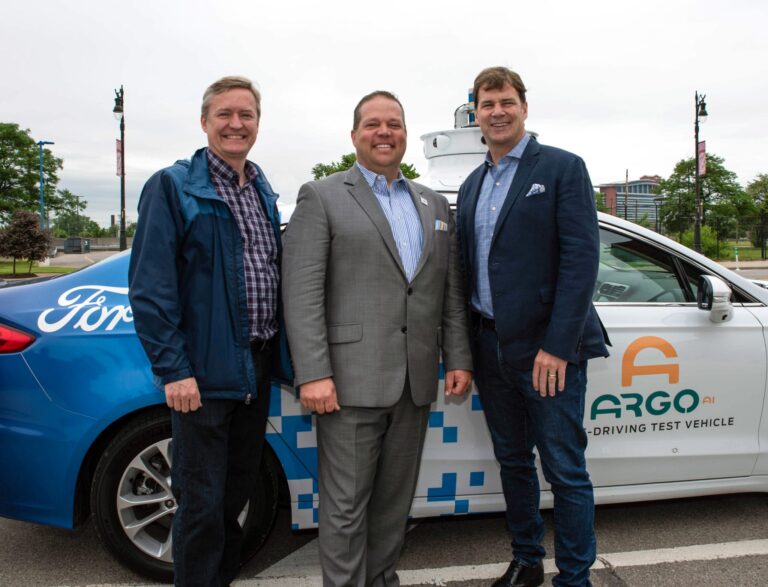Peter Rander, president, Argo AI, on why cities won’t be taking a backseat when self-driving cars are ready for prime time.
At Argo AI, and in collaboration with Ford, our plan is to work directly with cities as we prepare to launch services enabled by self-driving vehicles, engaging local leaders to learn how we can deploy this technology in a way that best serves their needs. This may take different forms in different cities, depending on community priorities, but we are committed to staying connected with city officials and engaging them in ongoing conversations about how self-driving cars can work for their people.
As part of that effort, we recently invited Rochester Hills mayor Bryan Barnett, who is also the new president of the US Conference of Mayors, to Detroit for a ride in one of our self-driving test vehicles.
Few people know cities like mayors do. Through frequent interaction with residents, businesses, and community organisations, they develop a deep understanding of their cities. They know where their community is thriving or how it may be struggling, so it’s important to help familiarise city leaders with technology that has huge implications for their residents.
I was honoured to host mayor Barnett and discuss some of these implications as we rode through Detroit. Here’s what he had to say about his experience — and what self-driving technology could mean for cities around the country.
“I tend to have a lot of faith in technology, but sitting in one of Ford and Argo AI’s new self-driving test vehicles as it drove through downtown Detroit was still an eyes-wide-open experience. The car smoothly navigated traffic and even handled unexpected situations impressively — like when a truck surprisingly cut us off and the car properly slowed down in order to let it pass. Scenarios like this serve as a reminder of just how much technology and preparation goes into helping a machine like this operate in a safe manner.

“As a mayor, I can say that it’s crucial for self-driving car companies to remain in regular conversations with cities, and to visit our communities to see how each one is different. Mayors and local officials may not have technology expertise, but they know their cities. They can provide important information about how self-driving vehicles can be rolled out to address the specific needs of their residents. The more we work together, the more successful this technology will be for everyone — and the faster it will be accepted, and even embraced, by everyone.
“Very often, when I talk to people about self-driving cars, one of the first things they mention is the potential to be more productive during their commute to work, as well as being able to relax and use their phone without having to worry about driving. Those are valuable benefits, but we can aim higher.
“Much of what we do in our communities is serve large ageing populations, and that’s universally true in all corners of the country. Self-driving cars give us the opportunity to expand mobility and extend the quality of life for people far past their personal ability to drive safely — and this is just one situation that autonomous technology can address. The same holds true for people with disabilities. I have personally seen the excitement that comes to the face of a disabled person who realises the independence and freedom that will come with this new era and dimension of mobility.
“I don’t think there’s a mayor in the country who is not excited about the way self-driving cars can improve life for the residents we serve. They have the chance to improve quality of life for just about everyone in the community regardless of level of education, income, ability, or zip code. Of course there are a lot of questions to answer about a major disruptor like this, but if companies like Ford and Argo AI continue to work with cities to figure out how to launch this technology, we can manage this transition just as our forefathers managed to move on from horse-drawn carriages.”
Source: Medium / Ford Motor Company





